The Olive Groves- The Land

Our land covers more than 18 acres and is certified organic.
Our small olive groves, form geometrical patches on the flanks of the rolling hills, between the ruins of Knossos and the village of Archanes. At an altitude of approximately 200 meters, the cool summer breezes protect our trees from the scorching summer heat. All within the perimeter of the Archanes PDO, our groves cover approximately 19ha. The PDO label “Archanes, Heraklion, Crete” is a guarantee of the superior quality of the Archanes region’s oil that has been exported for close to four millenniums!
Our organic conversion started in 2011 when we stopped plowing some of our fields.
The basis for healthy trees is taking care of the earth where the trees are growing. We have decided that our farming methods must not only protect the soil and its natural flora and fauna, but also replenish it and diversify it.
Our next step was to start mulching the olive branches and twigs after pruning. In this way we avoid burning these branches, which is the widespread custom and which releases unnecessary CO2 to the atmosphere. The mulched branches and leaves create a protective layer on the soil, which participates in bettering the quality of the soil. By decomposing they add natural fertilizer to the soil and the trees and also improve the soil’s humidity, allowing us to water them less in the hot summer months.
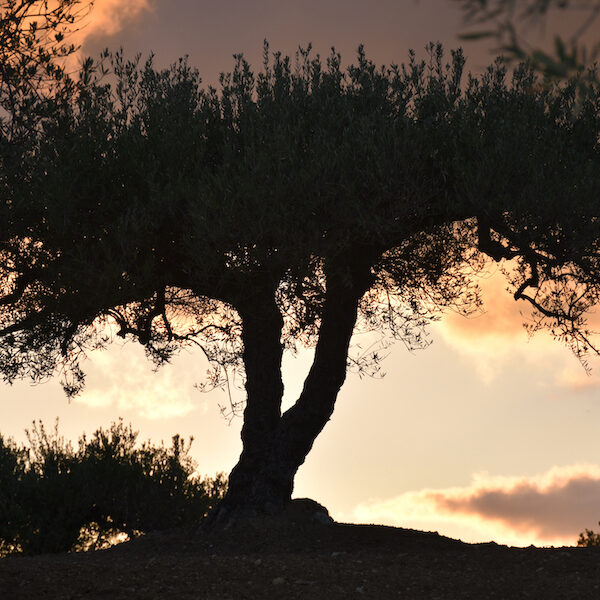
Similarly we contribute to the improvement of the soil (stable humus) by not weeding our groves. This technique is in fact a natural process that curbs erosion and has proved beneficial for the development of favorable microorganisms, contributing to an integrated weed control.
In the Fall and Winter months clover grows profusely between the olive trees making the groves very green. This bed of clover, rich in nitrogen is cut and left on the ground. The available nitrogen is then released by the clover, contributing to strengthen the olive trees.
Pest Control
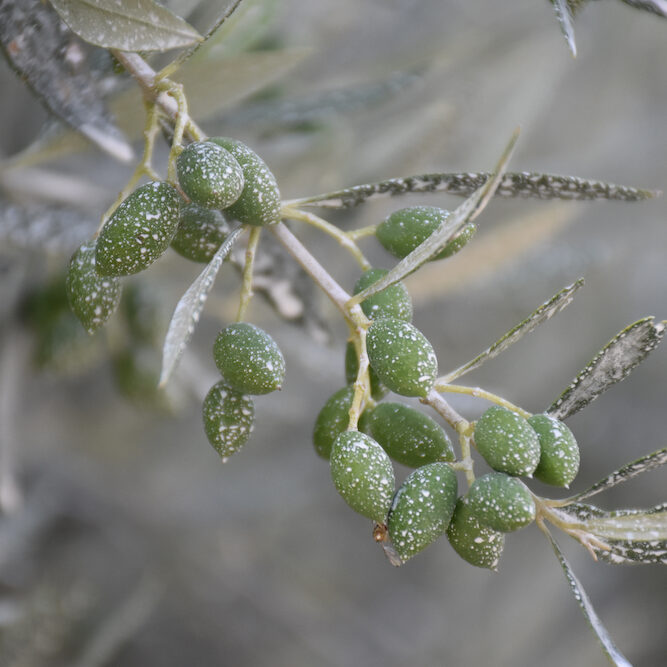
We protect our olive trees against the olive fly in a natural way with products that have been
approved by the EEC.
Since 2013 we build our own olive fly traps recycling old plastic water bottles which are hung in the trees with a mixture of ammonia and water. These traps efficiently attract the flies that drown in the water. We are trying to make the most natural choices possible in the cultivation of our trees.
We also use kaolini, a white natural clay to protect the olives from the olive fly. We are happy with the results. The clay is sprayed onto the trees and forms a protective layer on the olives themselves. The olive fly doesn’t recognize the surface it seeks and just flies away.
Furthermore we have decided to introduce intercropping on one third of our fields. It is known that a variety of crops grown between the trees and on the perimeters of the olive groves contributes to the natural control of pests. It also provides nutrients to the soil making them available to our olive trees. This was an old practice which was lost in “modern” farming. We have started planting citrus trees, vines, and various local herbs such as thyme, oregano, lavender or rosemary, but also white lupines, and much more, around our fields and amongst the olive trees.
Going even further, we are re-introducing forgotten or despised plants formerly considered weeds. For instance, we love inula viscosa, a sticky plant with small and numerous yellow flowers that liberates a powerful smell. The characteristics of this plant help in the struggle against one of the worst enemies of the olive tree, the olive fly.
Concerning the soil and fertilizers we recycle the « pirina » or dry « waste », what is called the olive cake, that results after pressing the olive paste, which is actually a mixture of the olive skin and the olive’s pit. We compost it, and use it as a natural fertilizer with any other green waste from our fields.
These ways of improving the soil are an attempt to rediscover the biodiversity which has been eliminated by olive monoculture. These changes in our farming management practices are spurred by our ever-growing interest in protecting the environment and our concern for improving the standardized methods of cultivation.
The Harvest is Our Busiest Time of The Year

Traditionally, in this area of Crete, the olives are harvested in late November mid-December. They range from all green in color to half green, half purple, to completely purple black. We have chosen to harvest our olives earlier, in early October, in order to produce a greener, tastier and healthier olive oil.
This optimum degree of ripeness gives our olive oil its assertive intense flavor and allows us to benefit fully from the high level of polyphenols present in the Koroneiki olive.
Nets are carefully spread at the foot of the trees before the picking begins. A team of six to ten people work in the groves from the early morning hours; two to four people equipped with rods gently comb the branches of the olive trees.
The vibrating cylinder made with flexible rubber teeth at the top of the rod moves back and forth allowing the olives to drop from the branches, without being damaged.
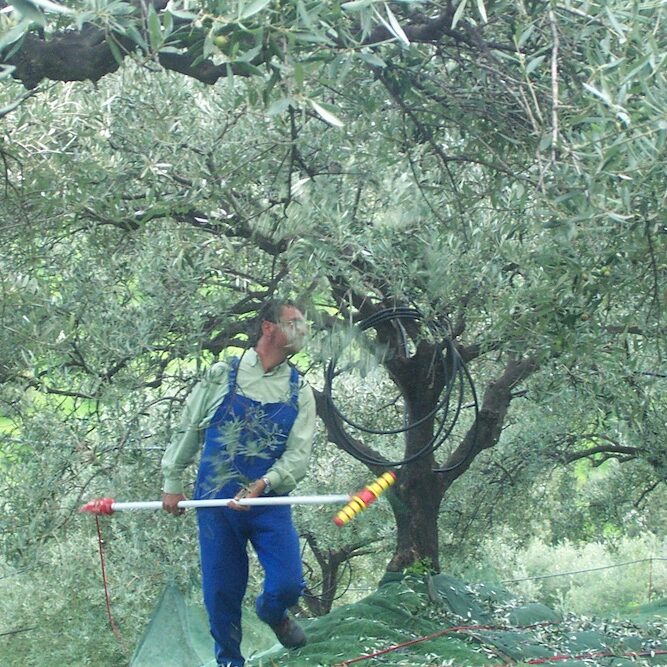
The olives fall onto the nets where they are gathered. Before the transportation to the olive mill, a first sorting takes place, directly in the field, where most branches and leaves are removed. The olives are taken to the mill within just a few hours of being picked, in order to prevent any fermentation that can quickly occur in stored and stacked olives.
Transportation takes place in boxes. We are careful not to jam them, as to avoid any olives being crushed, with a maximum weight of less than 25 kilos per box. As soon as the olives arrive they are carefully poured into a first stainless steel container that delivers them into a drum where a shower of water cleans the olives.
Then the olive oil making process begins. A maximum of 3 hours goes by between the harvest and the pressing of the olives. Legally, there is a 24h time frame. We have chosen to press the olives as quickly as possible after the harvest in order to ensure the freshest olives possible.
The Olive Mill
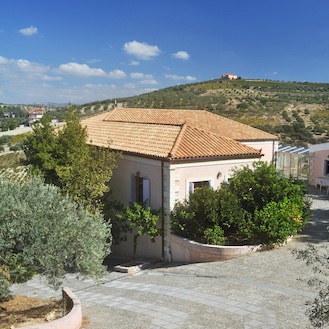
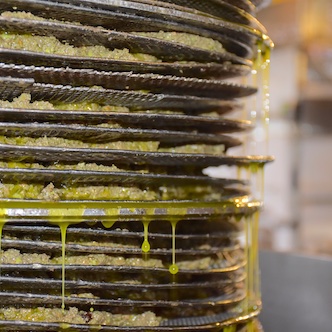
Making Extra Virgin Olive Oil
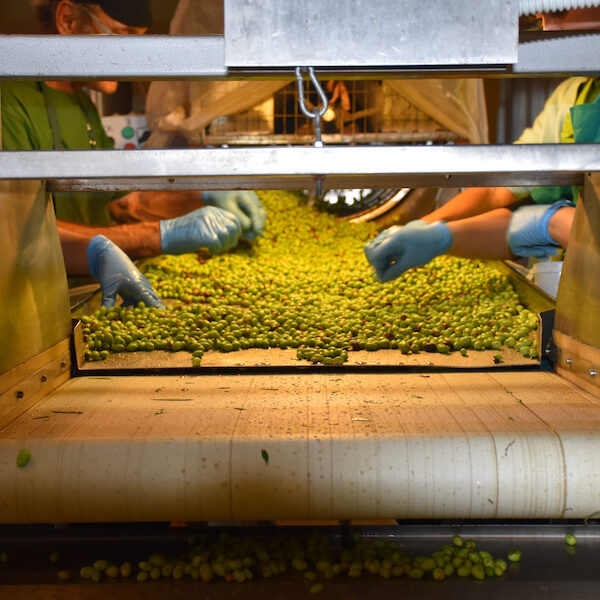
The production begins when the olives are poured into a stainless steel container that delivers them into an endless screw. Here a vacuum eliminates the remaining leaves. Delivered then into a drum, a shower of tepid water cleans the olives. Any traces of dust or earth disappear.
The olives roll onto a stainless steel table where a team of four workers sort the olives by hand, an arduous, time consuming task of the production. All impurities are here discarded, such as the odd branch, twig, leaf, or an insistent snail, and only the best olives are selected. It constitutes a fine point in our quality control.
From there the olives are delivered into the grinder where they are crushed whole, pit and all.
The vertical hydraulic press then exerts pressure on the fully stacked tower of mats squeezing the oil out of the paste, spread on the mats, resulting in our Extra Virgin First Cold Pressed Koronekes® Olive Oil.
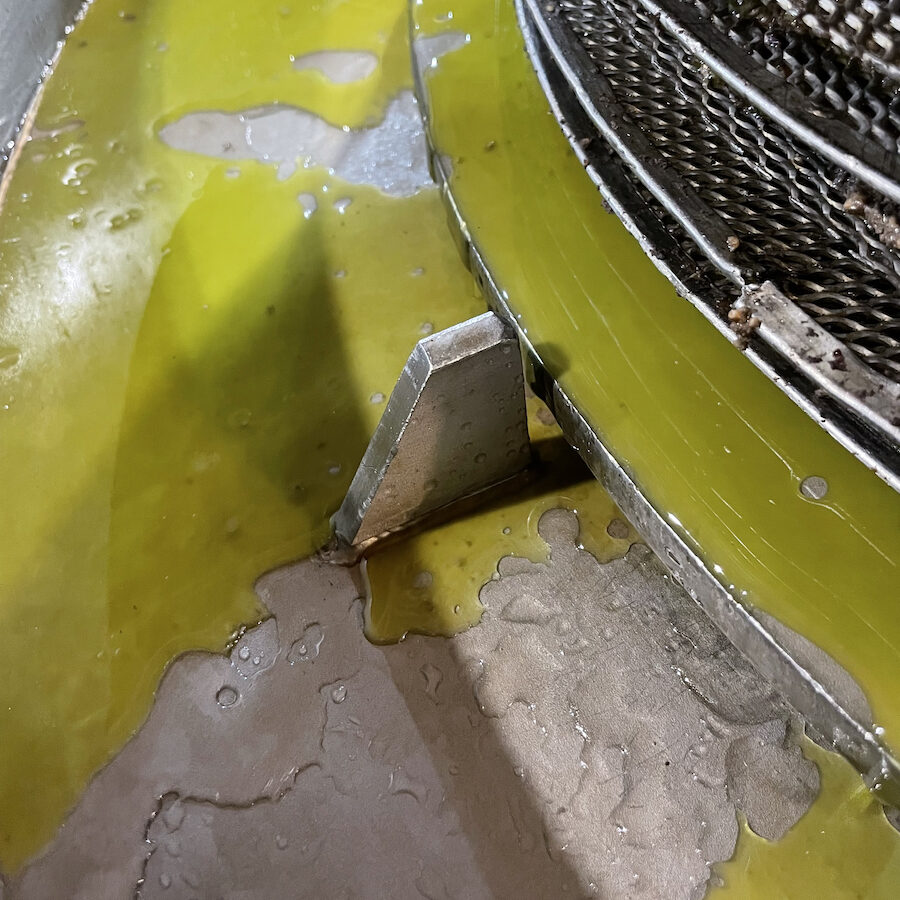
In fact the pit acts as a natural preservative when the olive is crushed whole.
The thick, grany paste moves into the malaxeur, where it is mixed for no more than thirty to forty minutes at a maximum temperature of 26°C. Here the droplets of olive oil start to coalesce.
This paste, a mixture of pulp and pit is then poured onto stainless-steel mats that are stacked, one by one, before they go to the press. Oil naturally seeps out, dripping from the mats, before the pressing begins. This run-off oil or “Fleur d’Huile” has an extremely low level of oleic acidity; under 0.03%. We collect it at this moment and place it separately in a decantation vat. The vertical hydraulic press then exerts pressure on the fully stacked tower of mats squeezing the oil out of the paste, spread on the mats, resulting in our Extra Virgin First Cold Pressed Koronekes® Olive Oil. When the pressing is over a residue containing the detritus of the pit and some of the olive’s skin remains. It is often recycled in Crete, many traditional households still use it as a combustible for heating, the « pirina », or olive cake; we use it as a fertilizer.
The oils at this stage are still cloudy. We have chosen to use natural decantation to separate the oil from the water it contains. After settling for some hours, lighter than water, the oil rises to the top of our decanters. This system allows for a higher quality product. The oil produced preserves the original characteristics of the fruit, namely its rich, fruity flavor.
After settling for some hours, lighter than water, the oil rises to the top of our decanters.
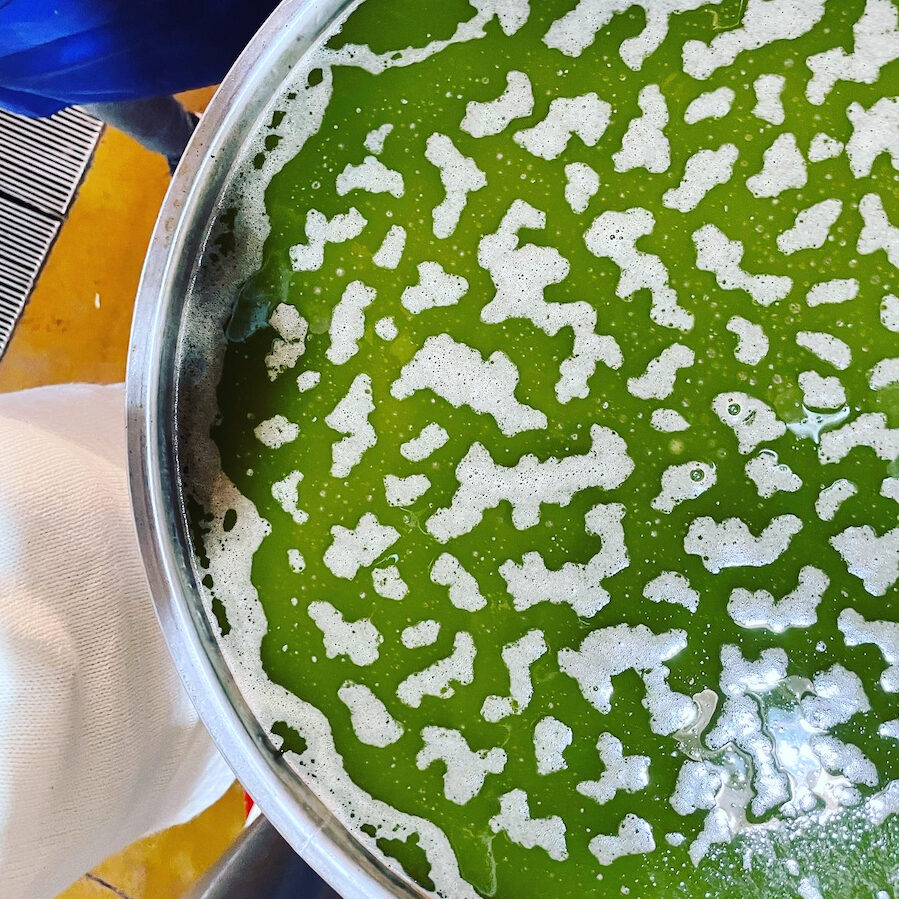
The pure “fruit juice” obtained is subsequently analyzed and tasted, then sent by force of gravity to small reservoirs (of 750 liters each), which are one level lower for clarification. Our mill, built three storeys high, uses the natural force of gravity for directing our olive oil from the production level to the storing vats, and from these vats to our bottling installation.
Every evening the whole mill and all the production machinery are completely cleaned using hot water.
After a period of natural clarification, we are able to choose the best oils to prepare our finished product. During clarification the settling of the oil takes place and the result is golden, clear, extra virgin olive oils.
A masterful blend of our different olive groves, is then bottled at the mill. Each bottle is numbered and boasts the PDO label of the Archanes region, a guarantee of its superior quality. The harvest date is clearly mentioned on the front label.
Bottling
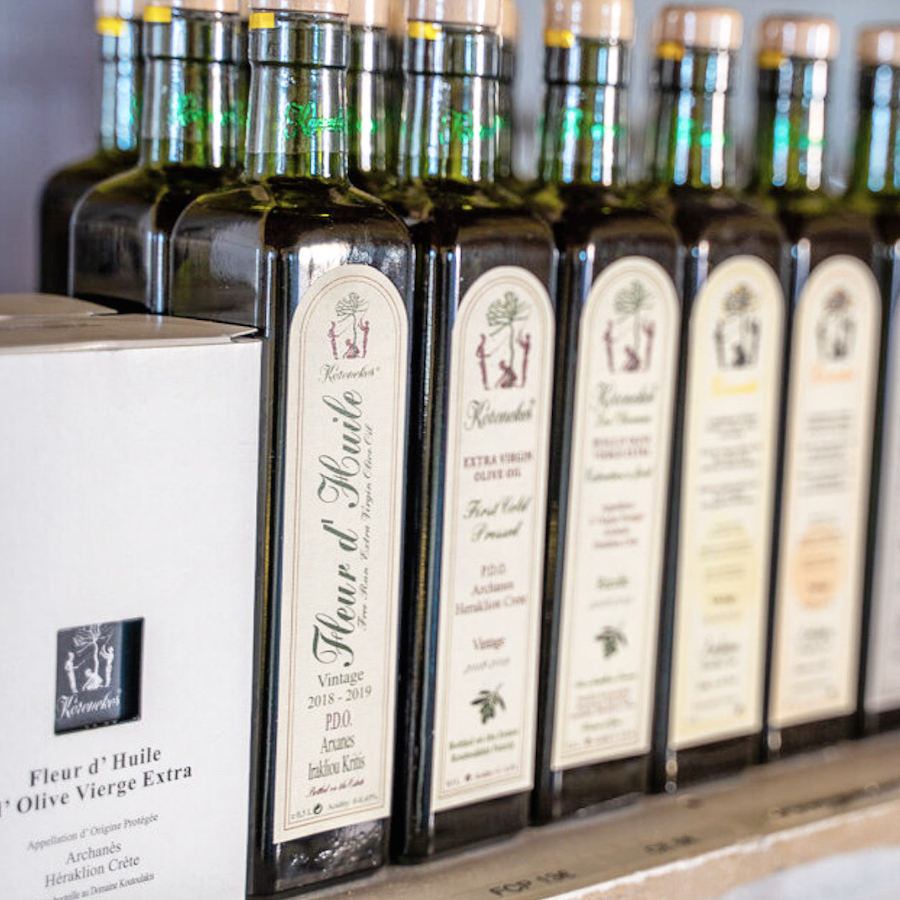
We bottle our oils unfiltered, in order to protect all the volatile flavors and aromas that give our oil its distinctive taste.
Our production methods ensure the exceptional quality of our Koronekes® Extra Virgin Olive Oils. Our added care ensures a totally natural and healthy product with all its qualities intact.
Thus, at every step of the process the extra care we take results in these “slow oils”, bursting with flavor.
We have become a rarity. Most oils today are produced by centrifugation. The old presses were replaced in most mills of Crete by new modern decanters and centrifuges. That is why since 2012 the European Union has implemented a new labeling directive which distinguishes extra virgin olives oils made using the genuine first cold press method and the ones made by cold extraction using centrifuges.
Unlike cold extracted olive oils, Koronekes® Fleur d’Huile, and Koronekes ® First Cold Pressed are produced using only gentle methods that do not alter the intrinsic qualities of the olives.
Taste the delicate, delicious difference.